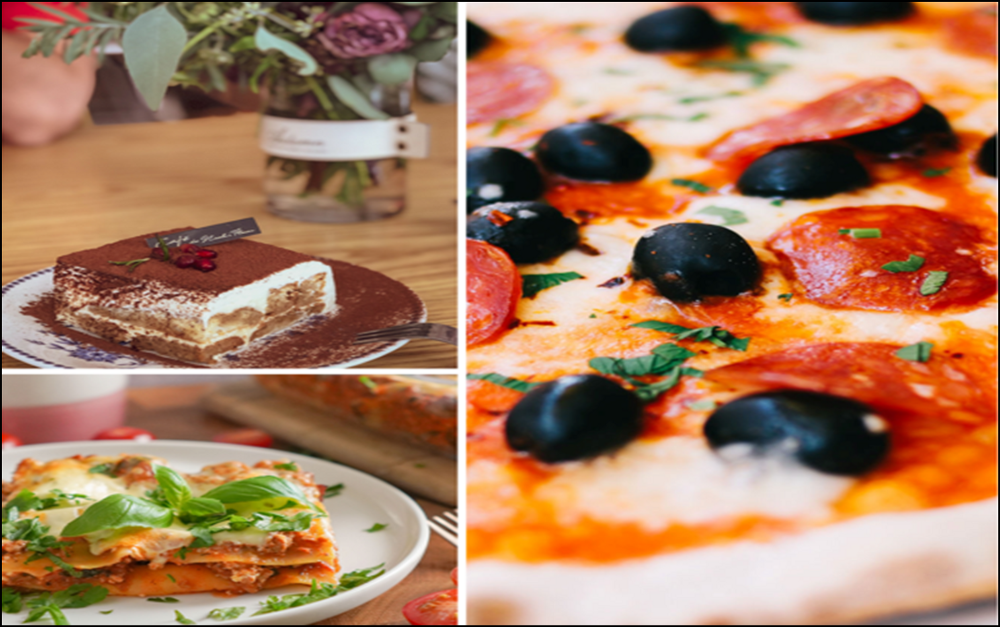
10 Of the best italian dishes no one should miss out on

Due to a huge number of external influences, Italian cuisine has developed into a distinct breed. The ancient Greek cuisine had been assimilated into the Italian culture at first, and then the Italians added fresh imports to their cuisine as Roman ships r
Italian cuisine has an incredible variety of flavors. Even for a native, determining the best Italian cuisine is impossible. This diverse range of foods is attributable to the significant differences in regional cuisines as well as occasional delicacies.
In this article, I’ve selected a few of the best from the vast array of Italian cuisines that no one should miss. Each item on this list will make your mouth water, so get prepared and let’s get started!
Classic baked lasagna
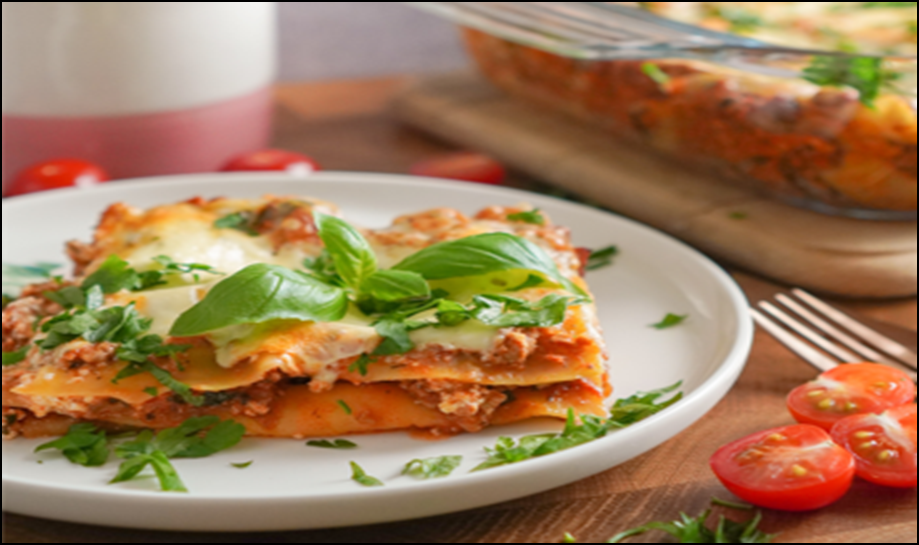
During the Middle Ages, the Italian favorite lasagna or lasagna was created in the city of Naples. A 14th-century English cookbook had a dish with layers of pasta sans tomatoes, which was one of the early references to modern-day lasagna. Later, in the 1880s, another allusion to lasagna appeared in an Italian cookbook that included tomato sauce.
The meal subsequently evolved into “Lasagna did Carnevale,” a traditional Neapolitan lasagna cooked with local sausage, fried meatballs, hard-boiled eggs, and ricotta or mozzarella. Today, lasagna is a great favorite among Italian dishes, owing to its excellent nutritional value and the “tasty cheesy” sensation that is difficult to define in words, which is why it has made it onto my list of “Italian foods no one should miss out on.”
How to make tasty lasagna.
Lasagna is a dish that can be made in a variety of ways.
We’re basically cooking a thick, meaty tomato sauce and stacking it with noodles and cheese in a casserole for this recipe. Here’s how it works:
Begin by combining ground beef, bell peppers, onions, and a mixture of tomato sauce, tomato paste, and crushed tomatoes to make the sauce. The sauce’s flavor is enhanced by the use of three different types of tomatoes.
Allow simmering while you prepare the noodles and the cheeses. We’re using ricotta, shredded mozzarella, and parmesan cheeses, which, like the tomatoes, give the lasagna a terrific flavor!
After then, it’s only a matter of putting everything together. A cup of beef sauce, a layer of noodles, more sauce, and cheese on top. Repeat until all of the ingredients are used up and you have three layers.
You’re ready to eat once the sauce has bubbled up!
Best pairings: The beautiful dish can be paired with; Gaglioppo, Chianti, Sangiovese, Teroldego, Dolcetto, Pignolo, Lambrusco di Sorbara and many more.
2. Spaghetti carbonara
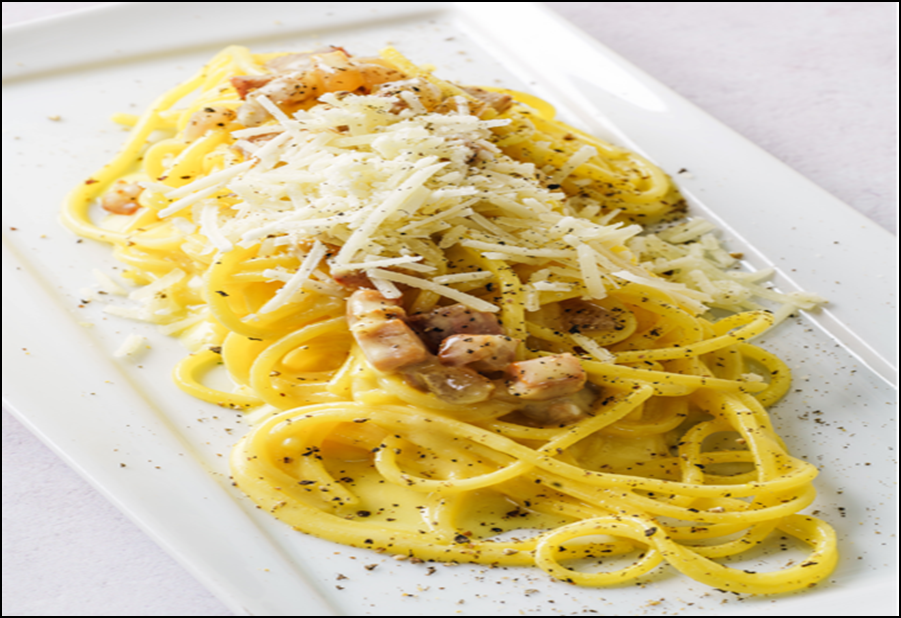
The Spaghetti carbonara: piping-hot pasta swirled with a creamy sauce made with raw beaten eggs, crisp chunks of guanciale, and a sprinkle of shredded old Pecorino Romano cheese and freshly ground black pepper to conjure up bliss that can only be found in the most beautiful dreams.
Carbonara is most closely linked with Rome and the Lazio region, although, like so many other Italian dishes, its origins are the subject of considerable debate and controversy in Italy.
Carbonara is a hugely popular dish not just in Italy, but all around the world, and professionals and home cooks are constantly tweaking it.
You can use it with just about anything. Although carbonara is a traditional dish, we should be open to different interpretations that allow us to portray a global story of diversity. Carbonara, as a superb garnish, allows you to produce a variety of modifications to the classic recipe.
How to Make Carbonara Spaghetti
A creamy sauce with an egg base coats pasta carbonara. Because the temperature from the noodles cooks the eggs, it’s best if they’re at room temperature and you’ve made them ahead of time so they can be swiftly added to the hot spaghetti!
Set aside sauce that has been whisked, an egg, grated cheese, and a black pepper bowl.
Pasta should be cooked. Cook the pasta until it is ‘al dente’ (not soft, but ‘to the bite,’ as al dente is defined.) Do not rinse the pasta; the starch aids the sauce’s consistency.
Toss everything together; stir the hot cooked pasta with the egg mixture as soon as possible. The egg will thicken as a result of the heat from the pasta. If necessary, add a little pasta water to achieve the desired consistency.
Garnish with a sprinkling of parmesan cheese and a sprig of minced parsley!
Best pairings: Pinot Noir, Chianti Classico, Barbera, or Montepulciano are fruity red wines with a bit of sharpness that combine well with Pasta Alla Carbonara because they cut through the creamy white base without overpowering the delightful bacon, butter, and cheese flavors. With Carbonara Sauce, white wines such as Pinot Grigio, Soave, Gavi, or Riesling are all wonderful picks.
3. Pizza Margherita
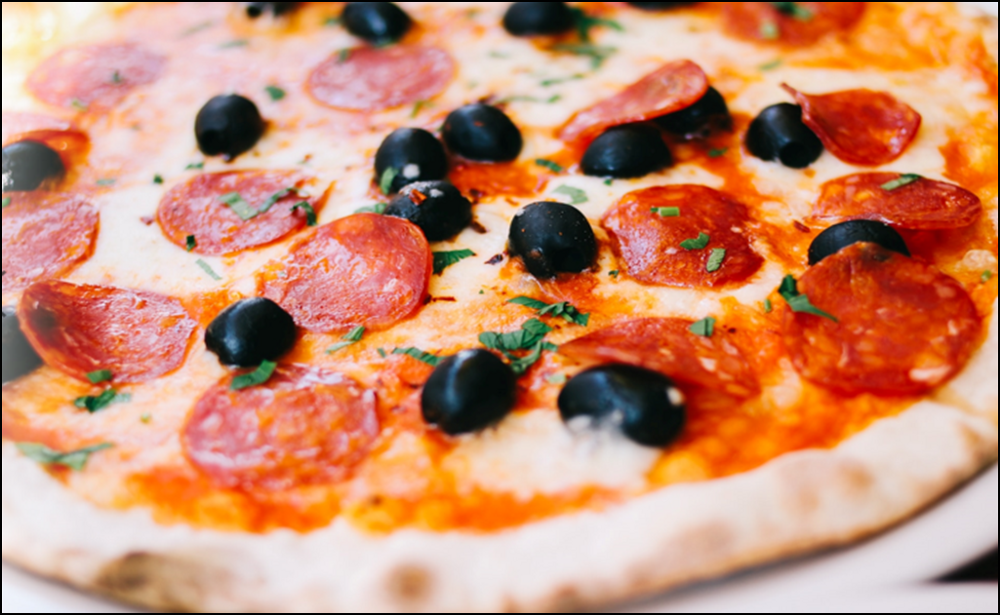
Of course, everyone loves the wonderful sensation of a bite of Margherita pizza. Pizza has become one of the most popular Italian foods in recent years (If not the most popular).
According to folklore, Raffaele Esposito, a cook at Pizzeria Brandi, devised Pizza Margherita in 1889 in honor of Italy’s unity, with three toppings: basil, mozzarella, and tomato, which represent the green, white, and red of the Italian flag, respectively. The “Classic Pizza Margherita” was born from these three toppings.
The “Ultimate Umami effect” is achieved by combining the chewy and crunchy texture with marinara sauce and cheese.
Making a Pizza Margherita in 4 quick steps.
Turn your oven’s heat to its highest setting and place a pizza stone or tiles on the middle rack. Allow at least an hour for it to heat up.
Place the sauce in the center of the stretched dough and distribute it evenly across the surface using the back of a spoon, stopping about 1/2 inch from the edges.
Drizzle a small amount of olive oil over the pie. Break the cheese into large chunks and lay them on top of the sauce gently. Sprinkle basil leaves on top.
Pick up the pie with a pizza peel and place it on the hot stone or tiles in the oven. In 4 to 8 minutes, bake until the crust is golden brown and the cheese is bubbling.
Best pairings: The Pizza Margherita can be best paired with any of the following; Caesar salad, Spinach Artichoke dip, Potato salad, Garlic cheese bread, Coleslaw, Mozzarella sticks, Roasted vegetables, and many more.
4. Risotto
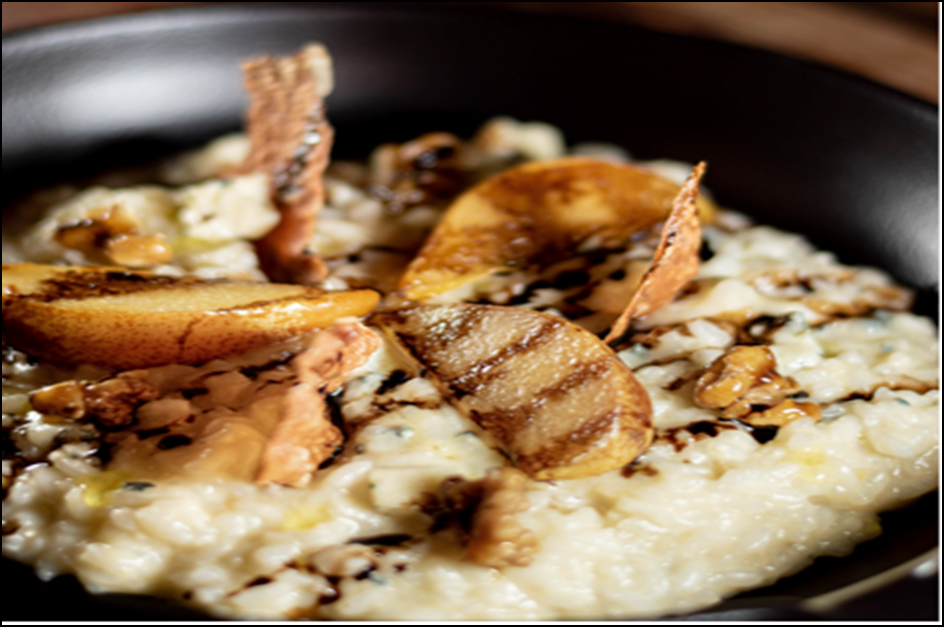
The origins of risotto can be traced back to the 14th century B.C. when the Arabs introduced rice to Italy and Spain during their reign. Because of the humid climate and abundance of flat ground, Italy was a perfect location for growing short-grain rice. As a result, rice has become an important ingredient of Italian cuisine.
According to legend, the risotto was created by a youthful apprentice who intended to spoil a rice dish prepared for a festival by adding too much saffron as a form of retaliation for poor treatment but instead created food that would become prominent in the culinary world.
Risotto is a simple rice dish that can be served as a starter or as a complete meal. It consists of four fundamental ingredients: “soffrito” (sauteed veggies), broth, seasoning, and Italian rice. It can be made with a variety of components, including but not limited to specialty herbs, seasonal fish, and different meats. The fact that only Italian rice is used to produce risotto adds to its uniqueness, which is yet another reason why you have to try it.
How to prepare risotto.
Risotto is a straightforward dish to make. It’s vital not to wash the rice before starting to cook because the starch in the grains is what gives risotto its typical appearance.
The rice, along with the selected vegetables, is browned briefly in a frying pan. While the combination cooks over a low flame, broth or wine is poured into the pan and allowed to soak into the rice.
When the risotto’s texture is thick and creamy, it’s ready to serve.
According to oureverydaylife.com, risotto may have evolved from an attempt to make rice more porridge-like.
Best pairings: The risotto can be enjoyed even better by serving with any of the following dishes; Braised lemon chicken, baked chicken, ricotta meatballs, Sautéed mushrooms, Green beans, Shrimp, and so many more.
5. Gelato (Ice-cream)

Gelato (a general term for various types of ice cream) is an Italian frozen delicacy. In Italy, professionally made gelato has a butterfat content of 6–10%, which is less than other frozen desserts. Gelato has 70 percent less air and 70 percent more flavoring than other frozen sweets, giving it a solidity and richness that sets it apart from other ice creams.
Vanilla, chocolate, hazelnut, almond, pistachio, cream (also known as custard), and stracciatella, i.e. fior di latte gelato with chocolate pieces. Fruity tastes like raspberry, strawberry, apple, lemon, pineapple, and black raspberry have become more popular in recent years too.
How to make authentic Italian gelato.
Ingredients: 4 medium egg yolks, 150g of granulated sugar, 350ml of whole milk, 250ml of heavy cream, and a little grated lemon zest or vanilla extract(optional).
Steps:
Whisk the egg yolks and sugar at high speed for about 5 minutes, or until a smooth, fluffy cream forms. A stand mixer or an electric hand mixer can be used. You can beat them by hand with a whisk, but it will take longer and the result will not be as good as using an electric mixer.
In the meantime, heat the milk in a pot until it almost boils. Cook for approximately 5 minutes.
The milk should not be boiled.
You can use a kitchen thermometer to make sure the temperature stays around 85°C (185 F). If you don’t have a thermometer, be sure to take the saucepan off the heat or reduce the heat if the milk begins to boil.
Transfer the egg and sugar fluffy cream to a saucepan at this point. Slowly pour the boiling milk. While you’re doing it, keep mixing. You’re also pasteurizing the eggs this way. The technique is similar to that of the Pastry Cream recipe, except for the flour. This is the moment to add either grated lemon zest or two drops of vanilla essence or vanilla bean to flavor your gelato. Return to the fire and simmer for another 5 minutes, stirring constantly and without boiling.
Then remove the pan from the heat and stir in the cool heavy cream. Mix thoroughly.
If you have an ice cream maker, now is the time to put the mixture in it and turn it on. Depending on the model, it will take roughly 40 minutes. Your gelato is ready when the required amount of time has passed. It’s light, creamy, and nutrient-dense.
If you don’t have an ice cream maker, transfer the mixture to a gelato container and freeze for around 5 hours. You must shatter the frozen surface every 30 minutes. So take it out of the freezer and whisk it for about 30 seconds with a hand whisk or a low-speed electric whisk. This step is required to avoid the formation of ice crystals in the gelato and provide a creamy outcome. Of course, this is a more time-consuming procedure, but it’s well worth it. You will undoubtedly enjoy a delicious real Italian gelato!
Best pairings: Fresh peaches and blueberries, as well as cherries, are popular ice cream and gelato toppings. In the spring, try strawberries, and in the fall and winter, sliced apples and pears.
6. Tiramisu
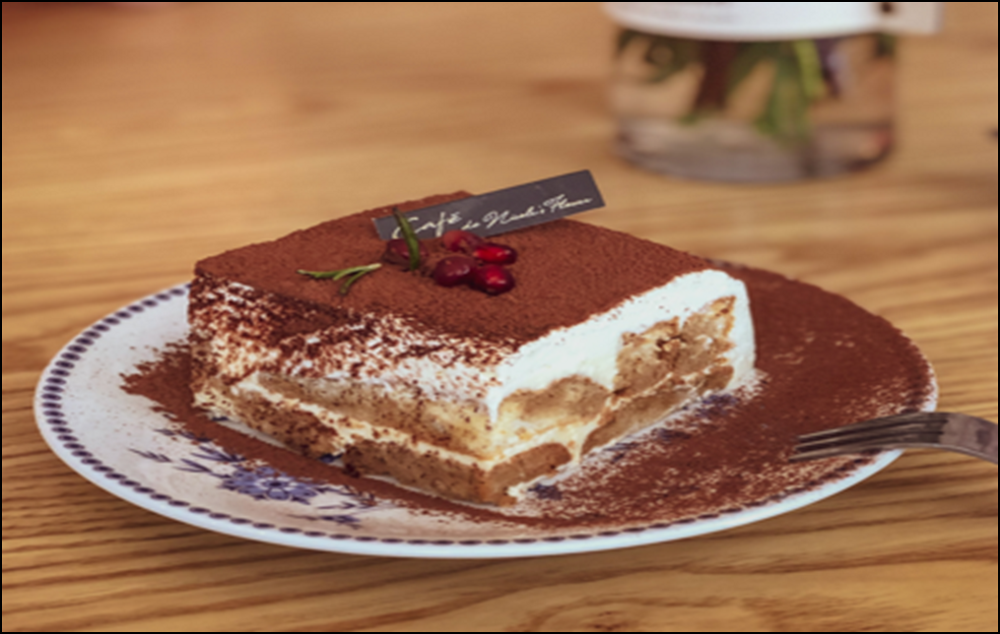
Tiramisu, that piece of cake or cup covered with mascarpone, sponge cake, savoiardi (also known as ladyfingers, those sponge cake biscuits fashioned like thick fingers), espresso, and cocoa powder, is a different story.
Tiramisu is the world’s most famous dessert today, and it is regarded as a modern “excellence” dessert.
Tiramisu simply translates to “pick me up.” Tiramisu is derived from the Treviso dialect “Tireme su,” which was Italianized in the second part of the twentieth century. Tiramisu is said to have originated in Treviso in the year 1800, according to historical documents. This dish is claimed to have been created by a brilliant “Maitresse” of a pleasure house in Treviso’s center.
The proprietor, “Siora,” created this aphrodisiac dish to serve to customers at the end of the evening to re-energize them and resolve any issues they may have had with their responsibilities in their relationship upon their return to their spouses.
This appears to be the origin of the Tiremesù, a 19th-century natural Viagra offered to brothel guests.
Tiramisu can be made in a few simple steps:
The filling should be creamy; to make stiff peaks, whisk together the mascarpone, crème, sugar, and vanilla essence.
Dab ladyfingers in the sauce; Dab the ladyfingers in the espresso and liqueur (if using) in a shallow bowl (don’t let them soak–just a brief dip!)
Mascarpone cheese should be layered; On top of the ladyfingers, spread a layer of mascarpone/whipped cream mixture.
Repeat; Place the second layer of ladyfingers (dipped in coffee and liqueur) on top of the cheese mixture. Dust with chocolate powder before serving.
Best pairings: Sweet and dessert-style wines like Port, Ice Wine, Moscato Rosa, Marsala, Vin Santo, and Cream Sherry pair best with Tiramisu.
Also, deserts like Cheesecake, Cupcakes, Chiffon Cake, Ice Cream, Swiss Rolls, Macarons, and Brownies go nicely together.
7. Zabaglione
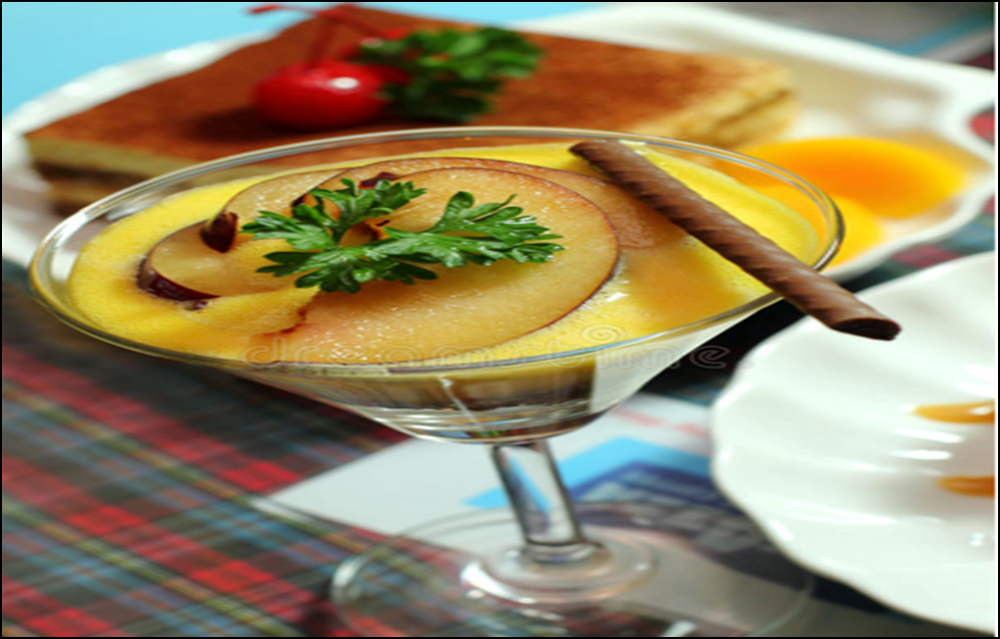
The origins of Zabaglione are unknown: for ages, three Italian areas — Tuscany, Piedmont, and Emilia-Romagna — have competed for credit for the development of this delectable custard.
Even though the original name is Zabaglione, it is now known in Italy as Zabaione.
The Franciscan monks of Piedmont are said to have invented Zabaglione to aid men’s stamina, according to mythology! The original name was claimed to be Sambayon, in reverence of Saint Pasquale Baylon.
Emilia-Romagna is home to the most interesting mythology about Zabaglione. We have a certain year, 1471, as well as a location, Reggio Emilia. The story begins with military captain Giovanni Baglioni and his troops encamped around the city’s walls. Giovanni Baglioni instructed his men to rob the farmers as usual, but the spoils were extremely meager that day: only some eggs, grapes, and sugar. The captain ordered that all of these ingredients be mixed and warmed together, resulting in a delectable custard that was given his name in the native tongue: ‘Zuan Bajun,’ which was later abbreviated to Zabaglione.
Easy steps to making Zabaglione.
Extract the yolk from the whites after cracking the eggs. Then, add the yolks, along with the sugar, into a metal mixing bowl and beat until smooth.
Place a pot half-filled with water over the flame at this point. Place the bowl over the saucepan when the water begins to simmer and cook the zabaglione using the Bain Marie technique (see here for more information), adding the wine and whisking constantly.
Whisk until the custard reaches 181°F (83°C), then set the bowl over ice to stop the cooking process.
Warm or at room temperature, serve Zabaglione with your favorite biscuit, fruit, or desserts.
Best pairings:
Zabaglione is generally served with traditional pastries and fruits.
COOKIES — Lingue di Gatto, Amaretti, and Savoiardi are three varieties of cookies that are usually served with Zabaglione.
FRUITS — the most traditional pairing is berries!
CHOCOLATE — Chocolate pieces in every scoop of Zabaglione could be a pleasant surprise.
8. Montebianco (Mont blanc)
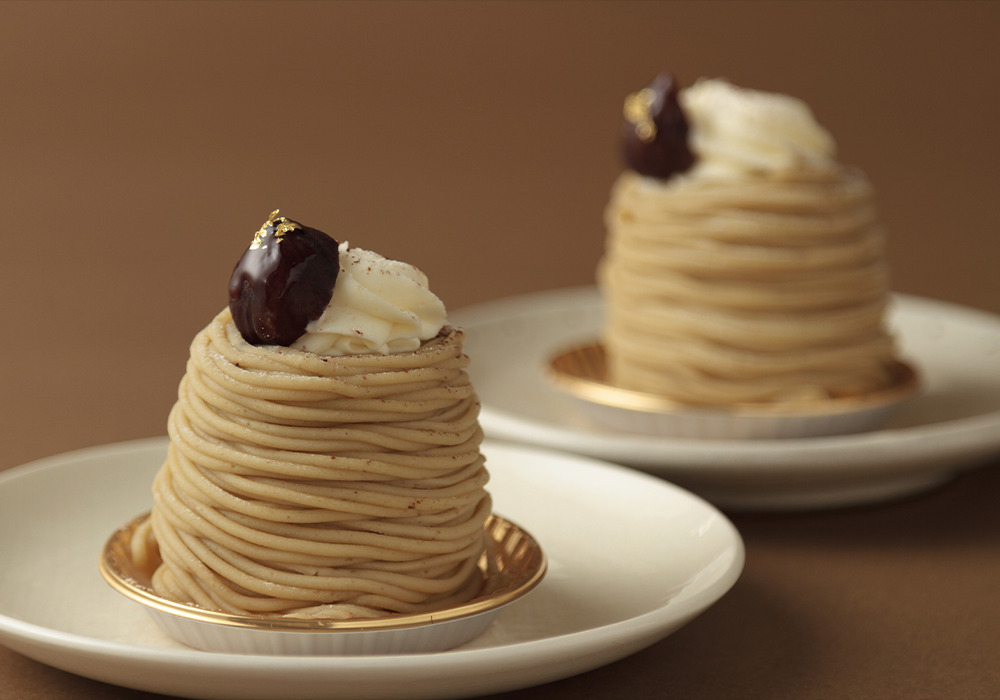
A delicacy made from puréed, sweetened chestnuts and delicate whipped cream known as Montebianco or Mont Blanc. This dessert was called after Mont Blanc, the highest peak in the Alps shared by Italy and France — the latter might also apply to the sweet variant, whose origin is still contested between these two countries — due to its similarity to a snow-capped mountain.
The savory (and gluten-free!) chestnut dish is traditionally saved for special occasions and winter celebrations. The chestnut mash with cocoa powder and rum is topped with a sweet “snowcap” of fluffy whipped cream and fashioned into a summit.
How to make the monte Bianco.
Remove the skin of the chestnuts on the hollow surface and thoroughly wash them before transferring them to a big pot with less than a gallon of water. Add the bay leaves or fennel seeds wrapped in a spice bag, as well as a dash of salt.
Allow for at least 30 minutes of cooking time for the chestnuts. Then, one by one, rinse and peel the chestnuts. Warm the vanilla in your hands before placing it on the chopping board. Using a paring knife, slice it vertically, spreading the edges apart and scraping out the pulp. In a saucepan, place the peeled chestnuts. Cover with milk, sugar, and a bit of salt, along with the vanilla bean pulp (or a few drops of vanilla extract).
Bring the chestnut-milk mixture to a boil, then reduce the heat to low and simmer for 30 minutes. (The chestnuts should be slightly hard but soft). After thoroughly rinsing the chestnuts and allowing them to cool, mash them with a potato masher in a mixing dish. Toss in the crushed chestnuts with dark chocolate powder and rum (if using). Refrigerate for at least two hours or longer after mixing until completely solid (The longer, the better).
After removing the chestnut pudding from the refrigerator, pipe little “mountains” of the mousse into ramekins. To serve, top with unsweetened freshly whipped cream and a pinch of dark chocolate powder. Small meringues, violet-flavored pearlized sugar, or marron glacé bits can also be used as a garnish.
9. Gnocchi
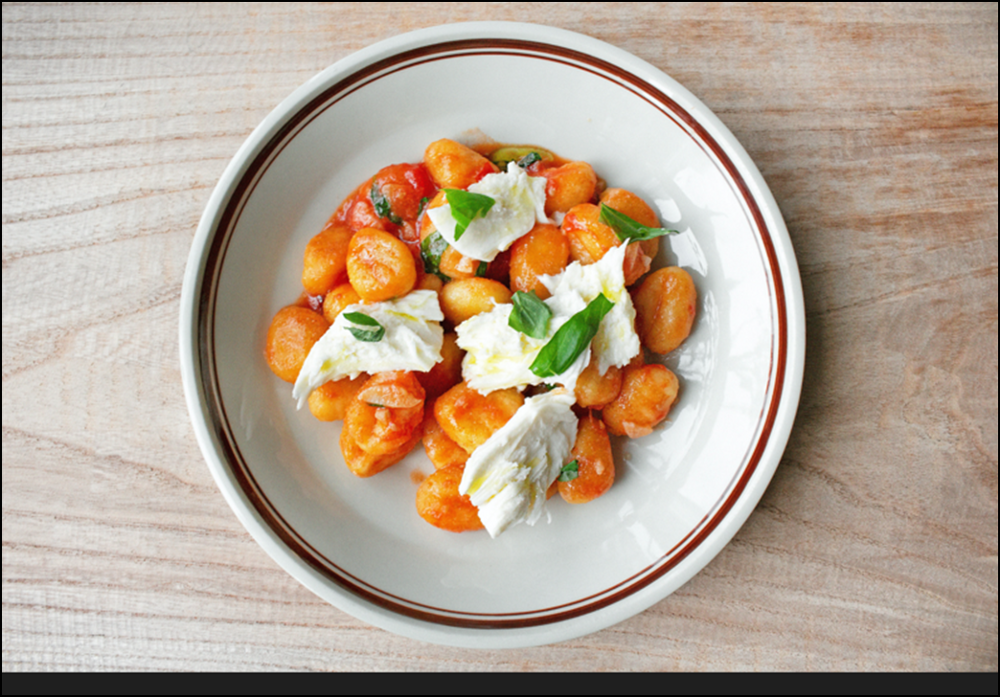
Gnocchi is a type of Italian dumpling that comes in a variety of shapes and sizes. They’re made of small chunks of dough made from semolina, regular wheat flour, egg, cheese, potato, breadcrumbs, cornmeal, or other similar components, with herbs, vegetables, and other things added if desired. Gnocchi dough is often flattened out before being cut into smaller bits around the size of miniature chocolate bars. To produce bumps, crush the dumplings with a fork or a cheese grater, or chop them into small lumps. Gnocchi is typically served as an appetizer, although it can also be served as a side dish with some main meals.
The roots of gnocchi can be traced back to a variety of places. While they are most commonly associated with northern Italy, the truth is these dumplings can be found all over the peninsula in various forms, made with a variety of base ingredients depending on where they are made: flour, corn meal, semolina, bread, chestnut flour, ricotta, or vegetables ranging from pumpkin to spinach to the traditional potato.
Easy steps to make tasty gnocchi
In a big saucepan of cool salted water, place the potatoes. Cook for 20–25 minutes, or until a fork can easily pierce a potato, after bringing the water to a boil. Drain and set aside until the potatoes are cold enough to handle but still warm.
Remove the skin from the potatoes with a peeler or your fingers. Mash the potatoes in a medium bowl until all lumps are gone. Mix in the salt and pepper thoroughly. In the center of the potatoes, make a well and crack an egg into it. Whisk the eggs for a few seconds. Then gently mix it into the potatoes with your hands until it’s equally distributed.
Turn out the potato dough onto 1 cup flour on a clean surface, keeping the extra half cup flour near your hand in case you need it. Knead the dough rapidly and carefully, only adding as much flour as needed along the way, until it loses its stickiness and becomes more solid. Cut the dough into four pieces. If the rope is growing too long, roll out 1 part into a long rope approximately 1 inch wide, cutting in half and working with 1 half at a time. Set aside on a lightly floured table after slicing the rope into 12-inch pieces. Repeat with the rest of the batter.
Place a fork on your work area and move each gnocchi square from the fork prongs’ base to the top, forming a beautiful shape.
Bring a big saucepan of salted water to a boil, and then add the gnocchi in groups, carefully tossing once or twice to make sure they don’t stick. Boil till they float to the surface, then remove from the water after 15–30 seconds.
Melt the butter in a skillet over medium heat and add the sage. Toss in the gnocchi until they are slightly golden. Enjoy!
Best pairings: Tomato Marinara Sauce, Italian Stuffed Tomatoes, Garlic Sauce, Alfredo Sauce, roasted squash with goat’s cheese, and many more.
10. Focaccia
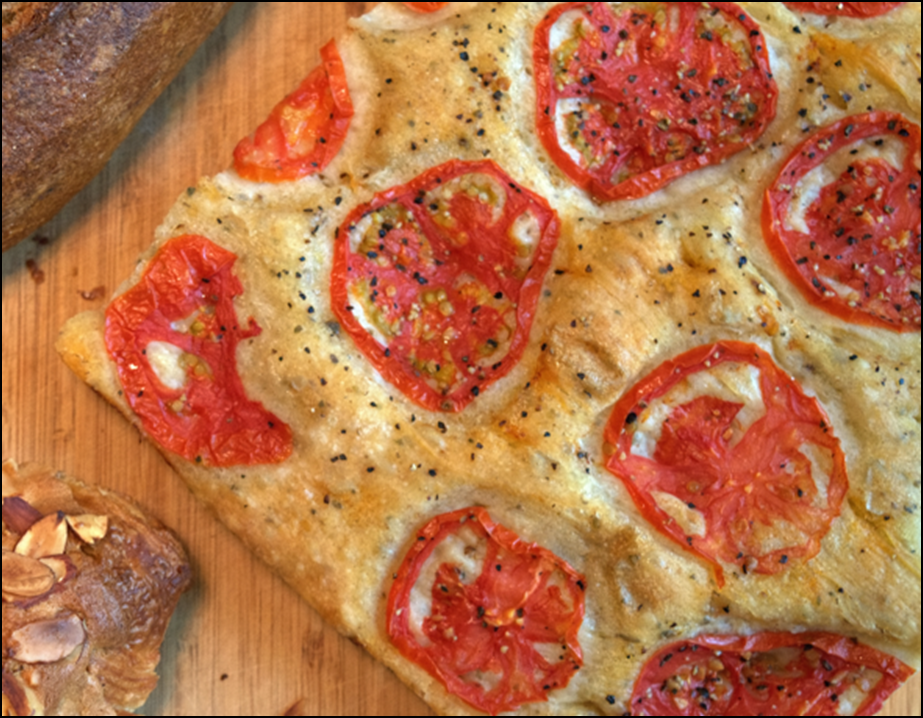
Before making its way to Italy, Focaccia Bread has its origins in Greek and Etruscan civilization. It’s a flatbread covered with olive oil, spices, and herbs that have been around for over a thousand years. Focaccia is flavored with extra virgin olive oil, olive pomace oil, or olive oil in the south of Italy, particularly in Apulia. The presence of cherry tomatoes, which act as a form of seasoning and bring the focaccia to look closer to the pizza, as well as the use of boiled potatoes in the dough, which make it softer and give it a distinct flavor, are unique to Apulian focaccia. The Focaccia can also either be sweet or savory.
How to make the perfect focaccia.
Make a well in the center of the flour in a mixing basin. Combine the yeast, sugar, and 100ml warm water in a mixing bowl. Gently fold in the yeast with a fork and set aside for a few minutes, or until it dissolves and foams.
Stir in an additional 150ml of warm water, the olive oil, and 1 tsp flakes of sea salt until a sticky dough forms. Knead for 5–10 minutes, until smooth and elastic, adding a little more oil if necessary. Form the dough into a disc and place it in a large, lightly greased bowl. Cover with a moist tea towel and set aside for 1 hour, or until the dough has doubled in size.
Preheat the oven to gas 6, 200°C, and fan 180°C in the meantime. Enclose the garlic bulb in aluminum foil, making sure it is well sealed. Roast for 25–30 minutes, or until tender, on the oven shelf. When the cloves are cold enough to handle, gently squeeze them out and set them aside until needed.
Toss the tomatoes in a basin with the oil. Toss to coat, season with salt and pepper, and set aside until required.
Oil a deep roasting tin and fill the tin halfway with dough and spread it out to the sides and corners. Make rows of evenly spaced dimples across the face of the dough with greased fingertips, and then push in the garlic cloves and tomatoes. Sprinkle the rosemary over top. Cover with greased aluminum foil and set aside for another 45 minutes, or until the dough has doubled in size.
Preheat the oven to 200°C, fan 180°C, and gas 6. Sprinkle the remaining sugar and a pinch of salt on top of the dough. Fill a separate tin with boiling water from the kettle and place it in the bottom of the oven. Bake the dough for 30 minutes on the middle shelf, or until golden. Allow it cool for a few minutes in the tin. Before serving, sprinkle with a little extra oil and enjoy!
Best pairings: Mashed potatoes, sautéed Broccoli, steamed shellfish, braised greens, fried eggs, salad, and so on.